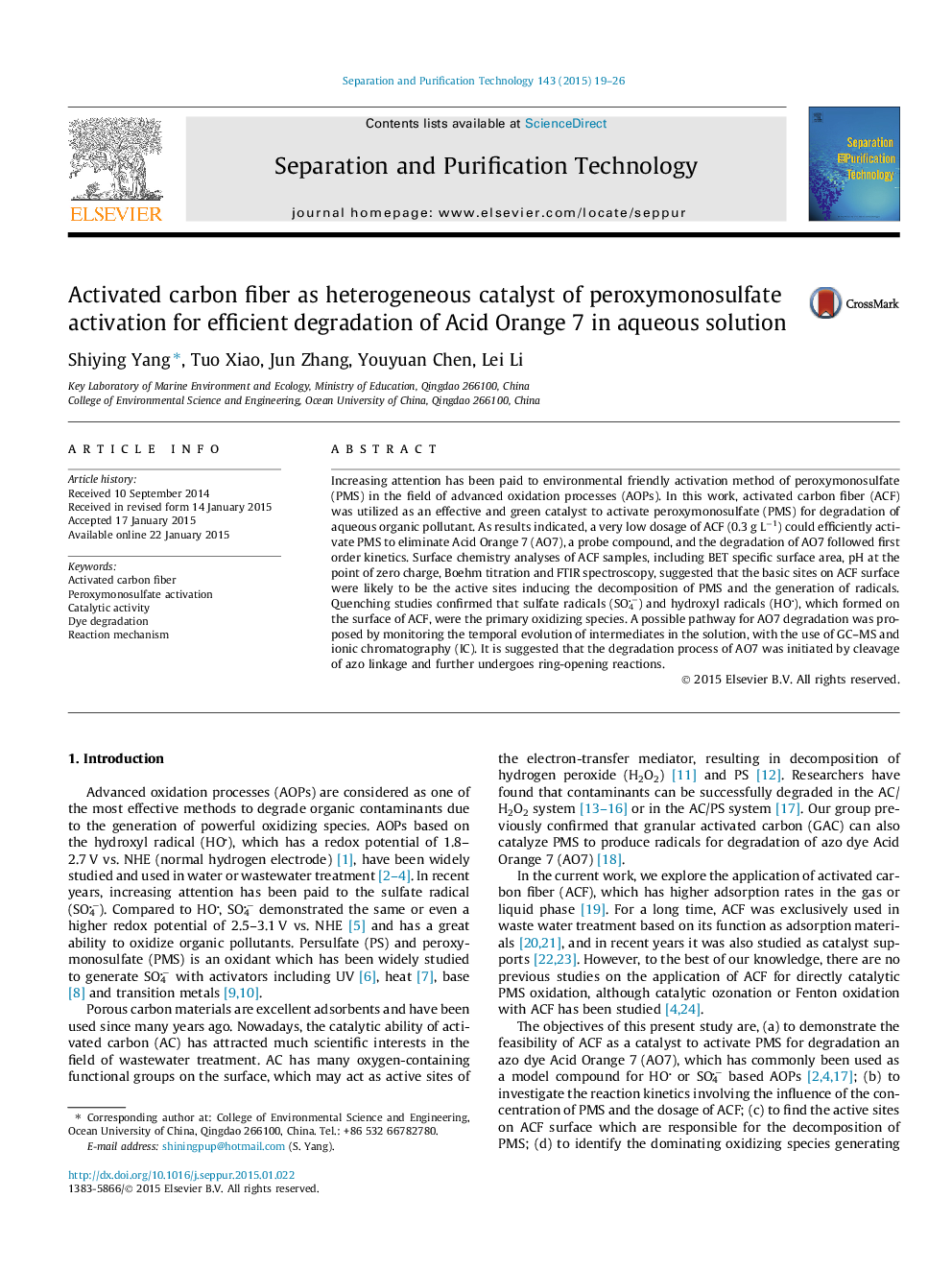| Article ID | Journal | Published Year | Pages | File Type |
|---|---|---|---|---|
| 640536 | Separation and Purification Technology | 2015 | 8 Pages |
Abstract
Increasing attention has been paid to environmental friendly activation method of peroxymonosulfate (PMS) in the field of advanced oxidation processes (AOPs). In this work, activated carbon fiber (ACF) was utilized as an effective and green catalyst to activate peroxymonosulfate (PMS) for degradation of aqueous organic pollutant. As results indicated, a very low dosage of ACF (0.3 g Lâ1) could efficiently activate PMS to eliminate Acid Orange 7 (AO7), a probe compound, and the degradation of AO7 followed first order kinetics. Surface chemistry analyses of ACF samples, including BET specific surface area, pH at the point of zero charge, Boehm titration and FTIR spectroscopy, suggested that the basic sites on ACF surface were likely to be the active sites inducing the decomposition of PMS and the generation of radicals. Quenching studies confirmed that sulfate radicals (SO4â) and hydroxyl radicals (HO), which formed on the surface of ACF, were the primary oxidizing species. A possible pathway for AO7 degradation was proposed by monitoring the temporal evolution of intermediates in the solution, with the use of GC-MS and ionic chromatography (IC). It is suggested that the degradation process of AO7 was initiated by cleavage of azo linkage and further undergoes ring-opening reactions.
Keywords
Related Topics
Physical Sciences and Engineering
Chemical Engineering
Filtration and Separation
Authors
Shiying Yang, Tuo Xiao, Jun Zhang, Youyuan Chen, Lei Li,
